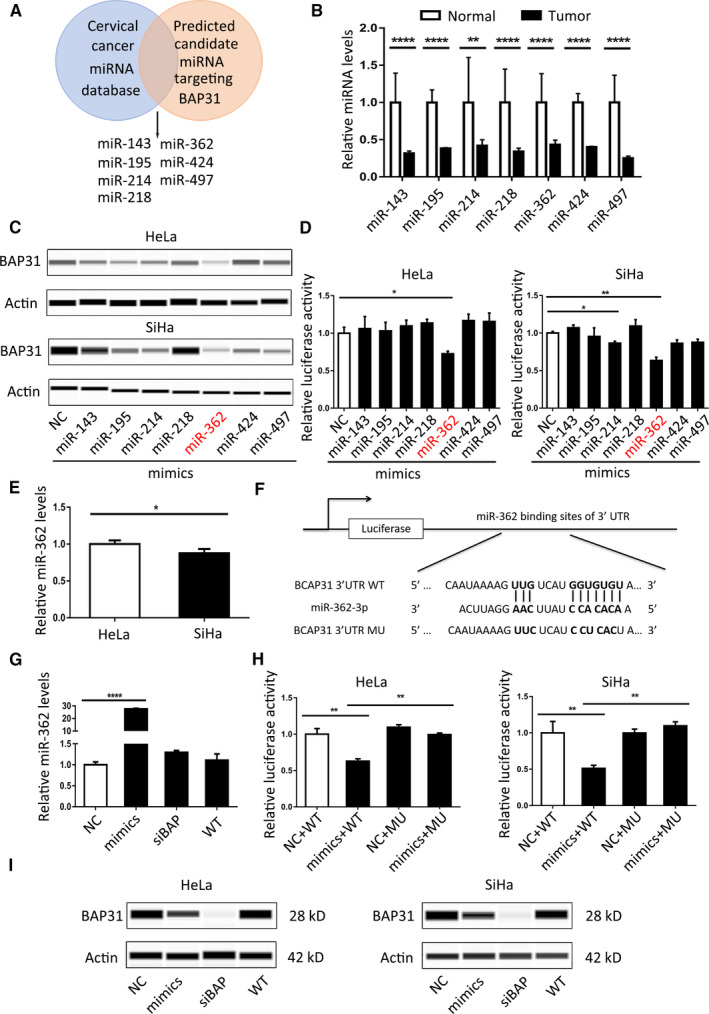FIGURE 1.

MiR‐362 downregulates BAP31 expression by directly targeting BAP31 3'‐UTR. (A) Venn diagram depicting potential miRNA candidates that may regulate BAP31 expression in cervical cancer. (B) qRT‐PCR results of miRNA expression levels in normal and cervical cancer tissues, 12 cases in normal group and 28 cases in tumor group. (C) Immunoblotting analyses for BAP31 protein levels following transfection of seven miRNA mimics into HeLa and SiHa cells. (D) Results of luciferase reporter assays in HeLa and SiHa cells co‐transfected with BAP31 WT (wild type) 3′‐UTR vectors and seven miRNA mimics, respectively, for 48 h. (E) qRT‐PCR result of miR‐362 expression in HeLa and SiHa cell line. (F) Diagram of BAP31 3'‐UTR WT and MU vectors for the putative target sequence of miR‐362. WT: wild type; MU: mutant type. (G) qRT‐PCR analyses for miR‐362 level following transfection of miR‐362 mimics, NC (negative control), and siBAP (BAP31 siRNA) into HeLa cells, U6 RNA was used as a control. (H) Results of luciferase reporter assays in HeLa and SiHa cells co‐transfected with BAP31 WT/MU 3′‐UTR vectors and miRNA mimics for 48 h. (I) Immunoblotting analyses for BAP31 protein levels following transfection of NC, miR‐362 mimics, and siBAP into HeLa and SiHa cells. Transfection with BAP31 siRNA (siBAP31) acted as a positive control. *p < 0.05; **p < 0.01; ****p < 0.0001. Data are represented as the mean ±SD of three independent experiments
